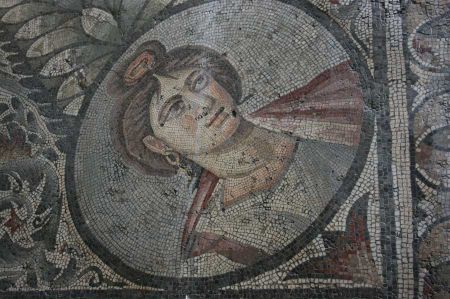Once again important artefacts found in Antioch ad Cragum
- Written by Portal Editor
After Turkish farmers found the first finds of Roman mosaics in 2001 while plowing a field in the vicinity of the ancient city of Antiochia ad Cragum, not far from Gazipasa, and reported this to the archaeological museum in Alanya, scientists from the University of Nebraska have now discovered more artefacts to expose and conserve as much as possible mosaic areas consisting of small mosaic stones.
Once again, the true interest of the majority of culturally responsible people in economically emerging Turkey is to be seen here. Once again, there is a need for foreign scientists and experts who are equipped with foreign funds to research already known places in order to secure the cultural property from further destruction. It is of course much easier to reclaim restored and exhibited cultural assets from museums around the world, which usually got there in a legally impeccable manner. And the Turkish side is often too happy to forget to mention that it is by no means a Turkish cultural asset, which is being demanded back, because it is much older. A topic that still leads to heated discussions emotionally. After many years of experience in Turkey, we can clearly say today that it was a good thing, to export Roman artefacts. The marble would have long been burned to lime (see Magnesia), mosaics carelessly destroyed, frescoes painted over or scratched (see rock-hewn churches in Cappadocia).
Antiochus von Kommagene founds Antiocha ad Cragum
 But back to Antioch ad Cragum. Antioch on the Kragos was an ancient city in the rough Cilicia (Kilikia Tracheia) on the south coast of Asia Minor, 20 km southeast of Selinus, today's Gazipasa in the Turkish province of Antalya, near the present-day village of Güneyköy. It was probably founded in the middle of the 1st century AD by King Antiochus IV of Kommagene (38-72 AD) after Claudius had entrusted him with control of the rough Cilicia in 41 AD. Since 72 AD it belonged to the new Roman province of Cilicia, from the beginning of the 4th century to the 7th century to the province of Isauria. For a long time science assumed that the city was rather insignificant and just superficially Romanized, but in recent years there have been increasing signs that Antioch ad Cragum was more important and richer than previously assumed.
But back to Antioch ad Cragum. Antioch on the Kragos was an ancient city in the rough Cilicia (Kilikia Tracheia) on the south coast of Asia Minor, 20 km southeast of Selinus, today's Gazipasa in the Turkish province of Antalya, near the present-day village of Güneyköy. It was probably founded in the middle of the 1st century AD by King Antiochus IV of Kommagene (38-72 AD) after Claudius had entrusted him with control of the rough Cilicia in 41 AD. Since 72 AD it belonged to the new Roman province of Cilicia, from the beginning of the 4th century to the 7th century to the province of Isauria. For a long time science assumed that the city was rather insignificant and just superficially Romanized, but in recent years there have been increasing signs that Antioch ad Cragum was more important and richer than previously assumed.
The area of the Roman mosaic excavated here covers around 150 square meters and shows once again how much the region around Gazipasa was under the far-reaching Roman influence in the first centuries AD. Excavation manager Michael Hoff proudly says: "We were surprised to find a mosaic of such size and caliber in this region"; and so he continues, "Historically and archaeologically, we don't know much about this area."
Temples, baths, markets and colonnades in Antiocha ad Cragum
Antiochia ad Cragum was obviously structured like a typical Roman provincial town. There were temples, baths, markets and colonnaded streets. The economy at that time was based on the timber trade and wine. The now exposed mosaic was part of a bathroom. It consists of several large squares which are filled with different geometric patterns and ornaments. "It's a beautiful mosaic," said Hoff. According to his estimates, just 40 percent of the total area has now been exposed.
It is likely to be the largest such mosaic in the region from around 300 AD, said excavation manager Michael Hoff. Hoff's team has been excavating the ancient city of Antiochia ad Cragum on the Turkish Mediterranean coast since 2005.
Please read as well:
Nebra Sky Disc - worth 100 million
Aquileia - Youngsters learning to ring the bell
